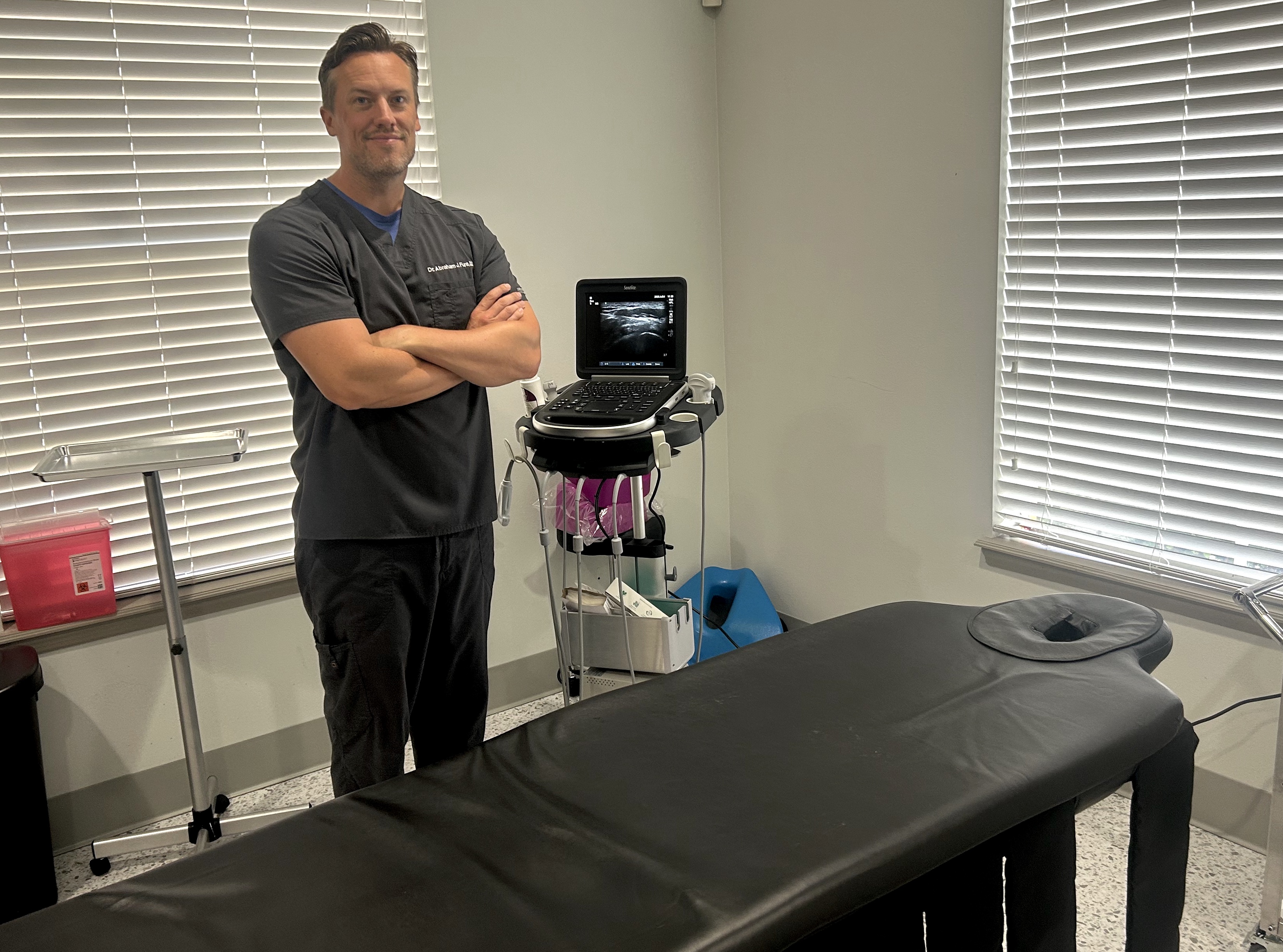
TREATMENT OVERVIEW
A Celiac Plexus Block is a specialized injection that targets the celiac plexus, a bundle of nerves near your spine that carries pain signals from your upper abdomen. This procedure provides significant relief for chronic abdominal pain, particularly from conditions affecting the pancreas, liver, and other upper abdominal organs. It's especially valuable for managing cancer-related pain and chronic pancreatitis.


PROCEDURE DETAILS
The celiac plexus is a network of nerves located behind the stomach, near the aorta. These nerves transmit pain signals from the upper abdominal organs. During a Celiac Plexus Block, medication is injected around these nerves to interrupt pain signals, providing relief from chronic abdominal pain.
The procedure is performed with you lying on your stomach. Using CT or fluoroscopic guidance for precise needle placement, thin needles are carefully advanced from your back to the area surrounding the celiac plexus. This image guidance ensures accurate medication delivery while avoiding vital structures.
Once proper needle position is confirmed with contrast dye, a combination of local anesthetic and either steroid or alcohol is injected. The anesthetic provides immediate relief, while steroids reduce inflammation for temporary blocks, or alcohol provides longer-lasting relief by creating a neurolytic block for severe, intractable pain.
TREATMENT ADVANTAGES
Celiac Plexus Blocks offer significant benefits for patients suffering from chronic upper abdominal pain, particularly when other treatments have been ineffective.
Many patients experience 50-90% reduction in abdominal pain, dramatically improving quality of life and daily function.
Effective pain control often allows significant reduction or elimination of narcotic pain medications and their side effects.
Relief from constant abdominal pain often leads to improved appetite, better nutrition, and weight stabilization.
Reduced pain allows for more restful sleep, improving energy levels and overall well-being.
Particularly valuable for cancer patients, providing comfort and dignity during challenging times.
Neurolytic blocks can provide pain relief for several months, reducing the need for frequent interventions.
IMPORTANT INFORMATION
While Celiac Plexus Blocks are generally safe when performed by experienced practitioners, it's important to understand potential risks and side effects.
Important: The use of advanced imaging guidance significantly reduces these risks. We'll monitor your blood pressure closely after the procedure and provide IV fluids if needed to manage any blood pressure changes.
PREPARATION GUIDE
Proper preparation is essential for a safe and successful Celiac Plexus Block. Please follow these guidelines carefully.
Complete blood work and imaging studies. Inform us of all medical conditions, especially bleeding disorders.
Stop blood thinners 5-7 days before. Adjust diabetes medications as directed. Continue blood pressure medications.
Clear liquids only after lunch. Nothing by mouth after midnight. Arrange transportation for procedure day.
Arrive 1 hour early. IV will be placed for fluids and sedation. Wear loose, comfortable clothing.
RECOVERY GUIDE
Recovery from a Celiac Plexus Block requires careful monitoring initially, but most patients can resume normal activities within a few days.
You'll be monitored closely for blood pressure changes. IV fluids will be given to prevent low blood pressure. You may feel lightheaded when standing - move slowly and have assistance when walking initially.
Rest at home with gradual activity increases. Drink plenty of fluids to maintain blood pressure. You may experience loose stools - this is normal and temporary. Take pain medications as needed.
Most patients notice significant pain improvement. Continue to rise slowly from sitting or lying positions. Diarrhea should resolve. You can gradually resume normal activities as tolerated.
Your follow-up visit typically occurs 2-4 weeks after the procedure. We'll assess pain relief effectiveness and discuss any ongoing symptoms. Additional blocks can be performed if needed.
CONDITIONS TREATED
Celiac Plexus Blocks are particularly effective for specific types of upper abdominal pain conditions.
For patients with cancer-related pain, Celiac Plexus Block can be life-changing, offering:
If you're suffering from severe upper abdominal pain that hasn't responded to other treatments, a Celiac Plexus Block may provide the relief you need. Contact Dr. Fura to discuss whether this specialized treatment is right for you.